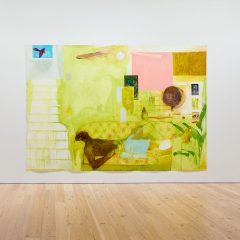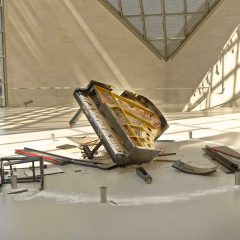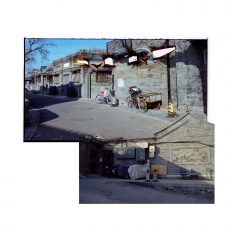On a slim wall between two of the Serpentine’s galleries, a note with cutout letters, like a ransom letter, is posted: “Art must have the right to risk being bad.” The message made me smile. But it then made me think, is Hans-Peter Feldmann giving himself a way out? Or is he, instead, merely reflecting on the natural process of art making? While the answer seems to be the latter, Feldmann’s work, showcased in survey in the current Serpentine show, repeatedly creates the space to question and explore the artist’s intentions, eliciting the raising of an eyebrow, a hint of a smile.
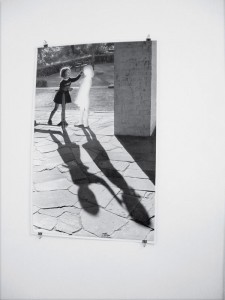
The German artist’s show ranges from photographs to work with found objects in installation. His early photographic works spring off the typologies of Bernd and Hilla Becher. Infused in both Time Series and A pound of strawberries, however, is a flat presentation of the banal, a tinge of humour and sarcasm. Photographs seem to be both boring—in recording a passing ship or an opening of a window—and cheeky/comical—in portraying each of the strawberries with careful and aesthetic individual attention. The artist further questions visual representation and its engagement, cutting out the silhouette of a little girl’s playmate in another photograph, playing with the shadows in printed and actual reality. A life-size 1:1 scale print of a bookcase inhabits another room, giving the illusion of being in someone’s study.
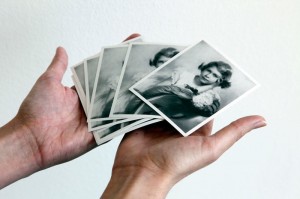
Feldmann further taps into the nature of our present visual culture with great skill. A series in the central room shows close-ups of people’s hands holding up old family photographs – layers of representation become immediately striking. Similarly, at the exit of the show, viewers are invited to participate in the same act by picking up a printed portrait of a childhood Queen Elizabeth II at the door to take home and keep (a curtsy to the upcoming Diamond Jubilee, echoed throughout art shows and fairs recently). It made me think how we have become a culture of quick visual collectors (and forgetters), lost in layers of re-representation.
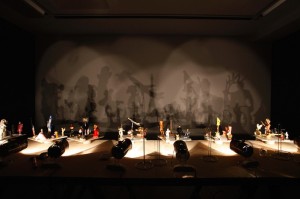
It is the randomized and ephemeral act of collecting that Feldmann exposes most deftly. One room features square platforms of assembled childhood bric-a-brac slowly rotating and lit up by makeshift spotlights, surrounded by the tools of the process; the resulting shadows-in-motion on the wall are mesmerizing, echoes of a distant past, the texture of our material accumulations, a silent moving picture. The artist also uncovers materiality by creating museum displays of the contents of women’s purses that he bought from them. He himself collects the paintings of ‘old masters’ to which he adds censoring bars, clown noses, cross eyes, tattoos and anatomical labels. Feldmann’s critiques are subtle, setting notions of cultural heritage, fashion and visual culture just slightly askew.
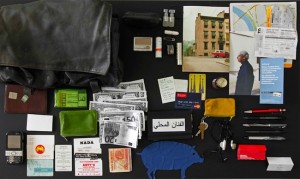
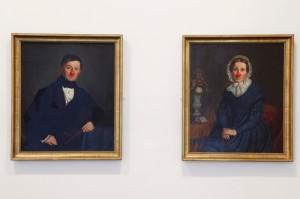
While some pieces in the show left me scratching my head, shrugging and moving on (as is likely in a wide-sweeping de-contextualized exhibition), the overall end-result of Hans-Peter Feldmann’s work at the Serpentine is of sly, quiet and humorous provocation of thought.


